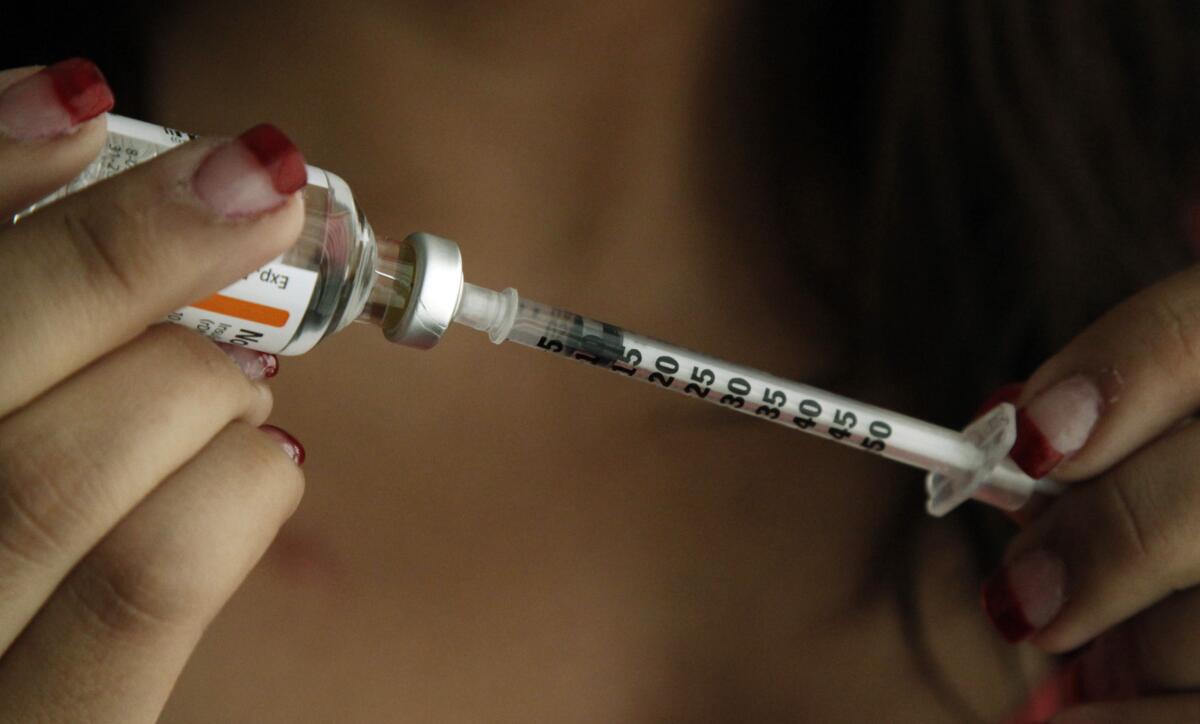Solve the insulin pricing problem by getting government into the business

- Share via
Insulin, an essential drug for more than 8 million Americans, is currently priced so steeply that many diabetics are forced to skip or ration this life-preserving treatment. Some 14% of diabetics are now spending at least 40% of their income, after housing and food, on the drug. Yet on Sunday — thanks to the filibuster rule — 43 Senate Republicans succeeded in stripping from the Inflation Reduction Act a provision capping the cost of insulin for non-Medicare patients.
Antidemocratic impediments to meeting popular and pressing public needs are becoming more and more common. And they’re inspiring a new approach to government action.
For decades, elected officials across the political spectrum have sought to run government like a business. These efforts have been a dismal failure, serving principally to confirm what critics already knew: Government cannot run like a business, at least not without betraying its fundamental responsibilities to the public. Now, in part because of the persistence of these antidemocratic impediments, some progressives are trying a slightly different tact: running government businesses.
Last month, Gov. Gavin Newsom promised to tackle the insulin crisis by funding a facility to produce and sell the drug at a price far more affordable than what for-profit manufacturers charge.
Creating government businesses may rub some people the wrong way, particularly in this highly polarized political environment. Republicans are already quick to cry socialism when confronting most regulatory or redistributive programs, and here we have a proposal for a government manufacturing and distribution scheme similar to efforts in the Progressive Era of the early 20th century, when South Dakota manufactured and sold cement and North Dakota set up a public banking system and a mill and elevator enterprise.
In the postwar era, we’ve largely eschewed government market participation to address market failures and have relied instead on legislation and regulation, which aim to promote competition and protect the safety of workers and consumers.
But in some cases — as with prohibitively expensive insulin — a move toward government production is reasonable given the failures of those now-standard tools. A minority of senators obstructed and likely will continue to block federal legislation. And, given the Supreme Court’s evident hostility to federal rule-making efforts, regulations may likewise be stymied.
In this reality, Newsom’s plan to provide an affordable public option and compete directly with for-profit manufacturers appears to be a particularly inspired choice — and also a potential model for other states to follow. Surely, though, care must be exercised.
First, states ought to coordinate, so they don’t duplicate one another’s efforts, thus forfeiting economies of scale and forgoing other opportunities. If other large states are willing to try this strategy, they may be able to address other pricing and supply disruptions, such as with the continuing baby formula shortage. Even small states can contribute. The failure of commercial banks to service low-income families might well call for public options. Perhaps Delaware, a corporate and financial hub, could manage a public banking network for any number of participating states.
Second, states ought to ensure that these government-run enterprises advance democratic goals of equity and empowerment. The temptation may be great, especially when states are not running surpluses, to hike prices to boost revenue. (California and other states have tried to raise money by selling premium goods or services — including upgraded (VIP) jail facilities, privileged access to less-congested highway “Lexus lanes” and special rare-game hunting licenses awarded to those willing to pay north of $100,000 — that reinforce, rather than narrow, marketplace divisions.) The goal should be to promote affordability and reduce inequality, even if that means pricing goods like insulin at or below cost — as we do with subsidized tuition for state colleges and universities.
There is, after all, a big difference between government running businesses — as an alternative form of regulation and redistribution — and government running like a business, where the goal of revenue raising can crowd out considerations of public empowerment.
In an ideal world, it’s far from clear that public enterprise options are better than regulating the market through legislation and agency rulemaking. But we’re a long way from such an ideal state and, given our reality, this foray into “public capitalism” may be the start of something big.
Jon D. Michaels is a professor at the UCLA School of Law, where he teaches regulatory and constitutional law and studies public capitalism.
More to Read
A cure for the common opinion
Get thought-provoking perspectives with our weekly newsletter.
You may occasionally receive promotional content from the Los Angeles Times.






